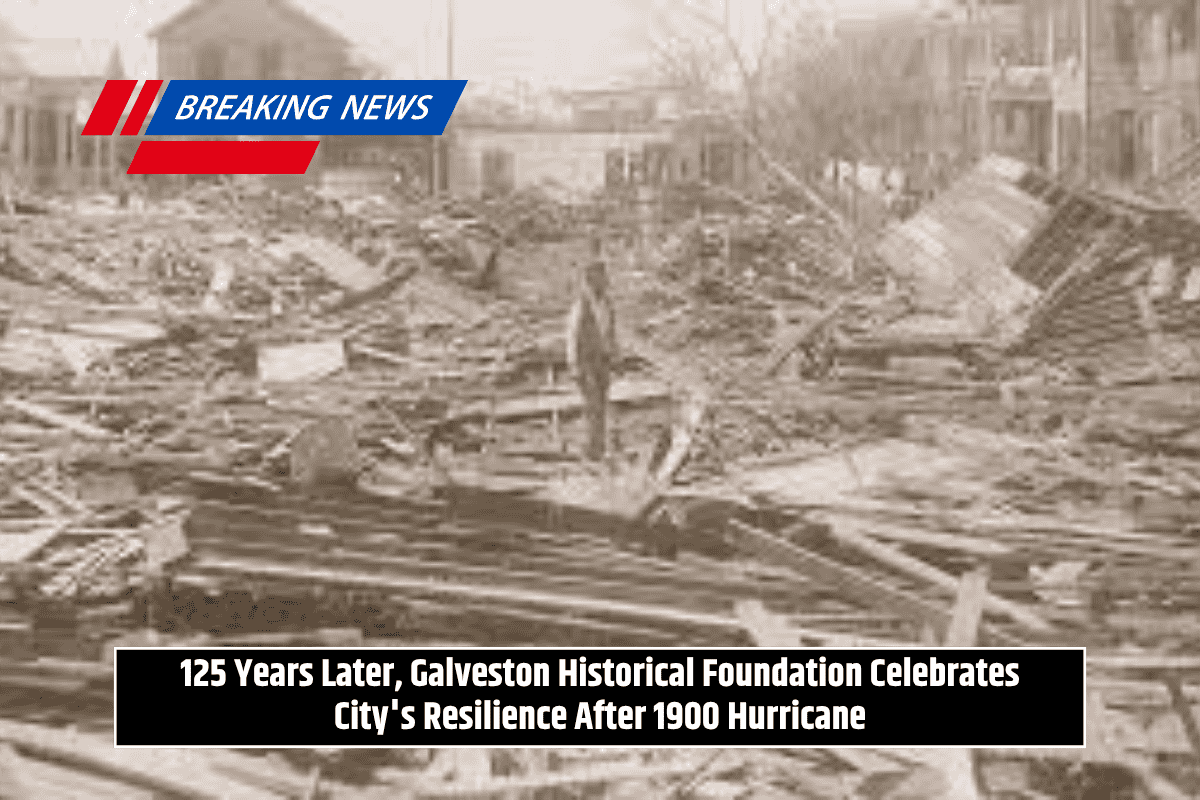In 1900, Galveston was hit by one of the deadliest hurricanes in U.S. history, with a 16-foot storm surge that devastated the city. Now, 125 years later, the community is honoring the victims and the enduring strength of the city that rebuilt from this tragedy.
Galveston’s Tribute to the 1900 Storm
To mark the anniversary of the storm, the Galveston Historical Foundation is hosting several events to remember the historic hurricane and the people who lived through it. The Foundation is recognizing qualified property owners with a Storm Survivor sign and plaque program to honor those who experienced the disaster.
Events during this commemoration include educational lectures about the storm’s history and tropical meteorology. Visitors will also be able to take trolley tours around Galveston to see historic homes that survived the hurricane.
One of the highlights will be the Market Street Social, held from September 6 to 9, featuring local food and live music.
Remembering the Impact
Will Wright, the chief creative officer at the Galveston Historical Foundation, emphasized the importance of remembering this critical event in the city’s history. He noted that the hurricane shaped Galveston into what it is today, and many of the stories and names from that time still live on.
“It’s a defining part of being in Galveston,” Wright said. “You’re surrounded by the stories, you’re surrounded by the names. It’s a good opportunity for us to showcase that history.”
The Great Storm: A Devastating Force
The Great Storm of 1900 remains the deadliest natural disaster in U.S. history. It struck Galveston on September 8, 1900, with winds reaching up to 145 mph and large waves that flooded the island.
Meteorologists describe it as a “Cape Verde-type hurricane,” which formed off the coast of Africa and strengthened as it traveled across the Atlantic and Caribbean.
At the time, the U.S. Weather Bureau lacked the tools to track hurricanes effectively, leaving Galveston unprepared for the storm. Experts estimate that between 5,000 and 6,000 people lost their lives, and much of the island’s infrastructure was destroyed.
Galveston Before and After the Storm
Before the storm, Galveston was one of Texas’ largest and most influential cities, known for its thriving port and vibrant commercial life, earning it the nickname “Wall Street of the South.” However, the hurricane severely damaged the city’s economy, and recovery took decades.
The city didn’t fully rebuild until the 1970s when efforts to restore the historic district, known as The Strand, brought new energy and life to the community. Wright pointed out that the city’s recovery was helped by the long-discussed plan to build a seawall.
Over the years, many buildings were raised on jacks, and the land was filled with silt from Galveston Bay, which raised the island’s level and made it more resistant to future storms.
The Resilience of Galveston
According to Wright, the Great Storm and its aftermath were a testament to the resilience of the Galveston community. Over the years, the city has faced many hurricanes, but each time, it has managed to rebuild and adapt.
“We are proud to be able to come back from storms. We are proud to be able to deal with those things in ways that other places probably can’t or haven’t,” Wright said. “It is definitely part of the Galveston spirit.”
As Galveston honors the memory of those who lost their lives in the 1900 storm, the community continues to celebrate its strength and its ability to rebuild, ensuring the stories of that dark day are never forgotten.
